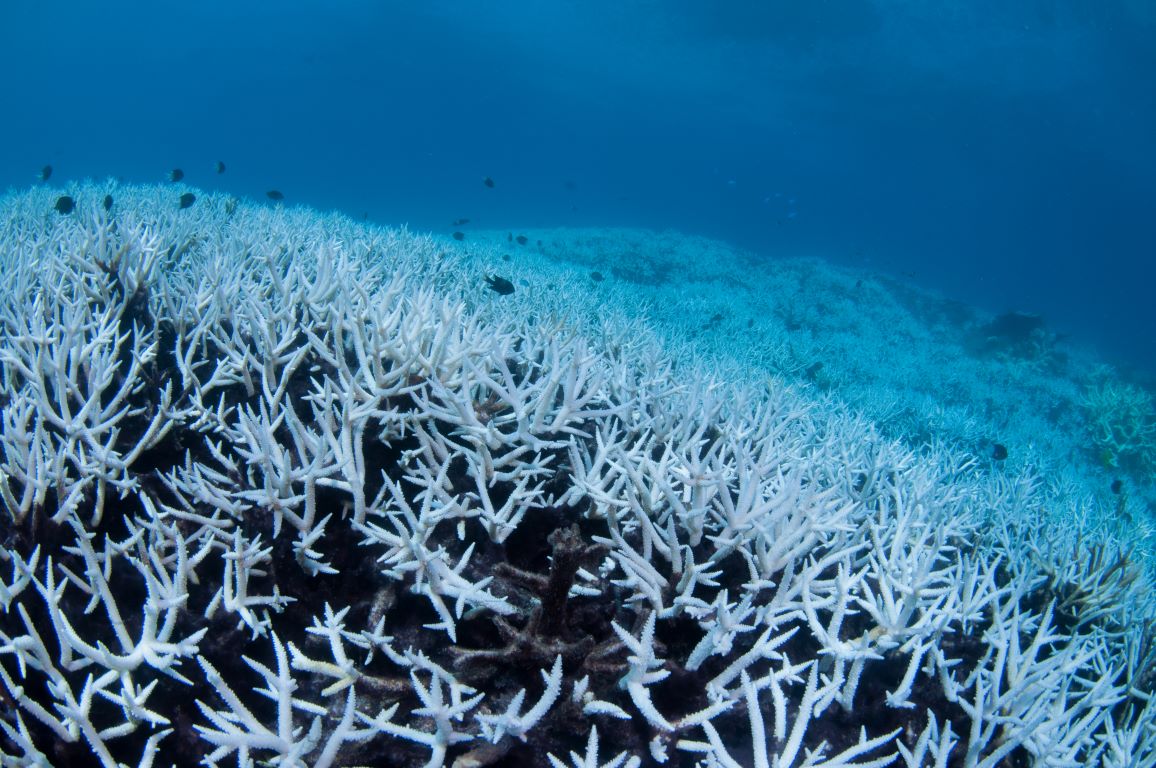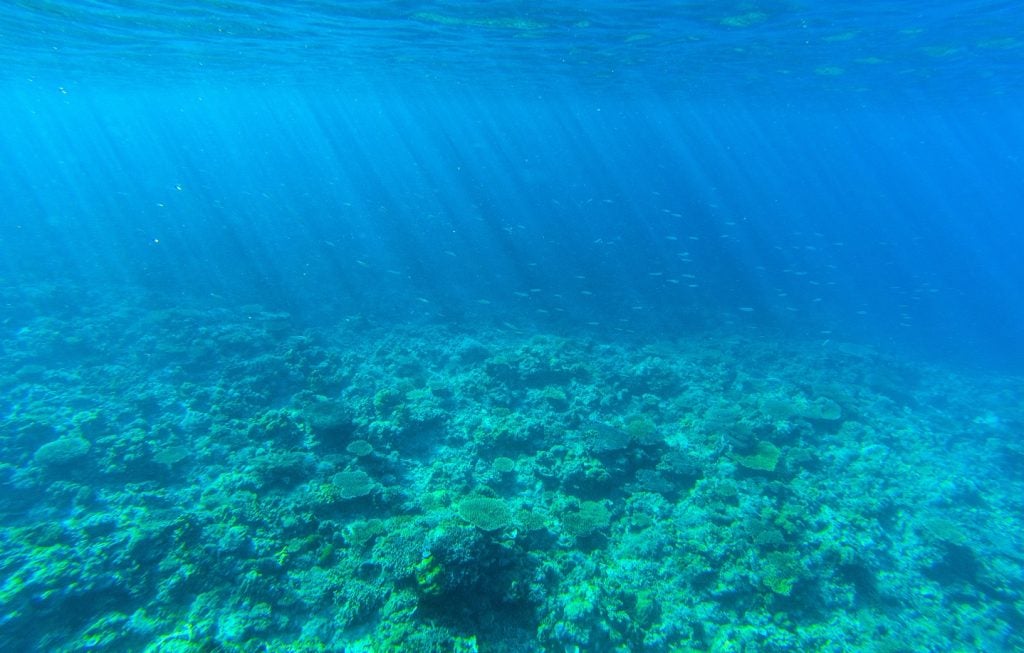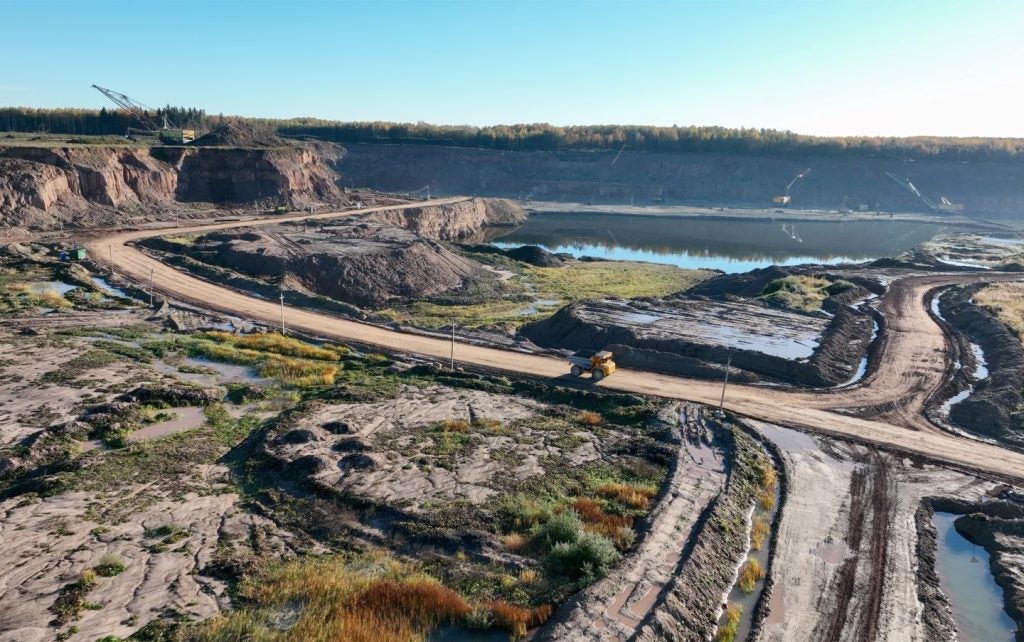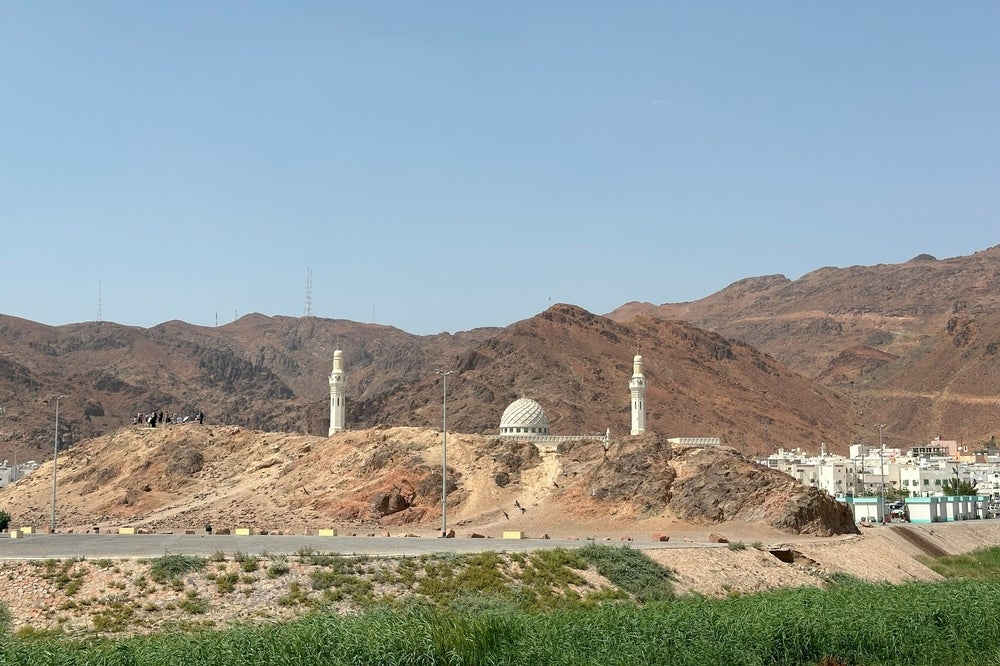
The Great Barrier Reef (GBR) lies along the coast of Queensland and stretches 2,300 km along the coast. Across the world, it has become a symbol of tropical seas, and of the wealth of ocean life barely understood by the average person. In recent years, it has also become a striking symbol of climate change, with visible coral bleaching events now happening on a regular basis.
According to UNESCO, it contains the world’s largest collection of coral reefs, with almost 400 types of corals, 1500 species of fish and 4000 types of molluscs. These are the species that rush around a healthy reef in a river of constant colour, contrasting with lifeless bleached reefs that seems like fields of skeletons.
Marine biologists are attempting to understand the exact causes of these events, but the changes to the environment are clear. The ocean is now hotter, less salty, and more acidic than at any point since the last ice age. This is where environmental protections step in, and why mines have come to the centre of the discussion.
Blocking the Waratah coal mine
The GBR is protected and managed by the Great Barrier Reef Marine Park Authority, an independent Australian government agency. Legislating for the long-term protection and conservation of the reef, the Great Barrier Reef Marine Park Act was established in 1975 and was amended in 2008. Under the Marine Parks Act established in 2004, Queensland remains responsible for managing the region.
At the time of the act, the Queensland government made eight coal mining projects exempt from providing a report on their environmental impact on the reef. Another six projects with environmental reports received the state’s approval. Environmental campaign group Greenpeace said that expanding the coal industry in this time would accelerate dangerous climate conditions, leaving no chance for the reef to repair itself.
Blocking the coal projects
On 8 February, Australia’s environment and water minister, Tanya Plibersek, denied permission to construct a thermal coal project on the eastern coastline of Australia, near the GBR. In a video posted on Twitter, Plibersek said the consultation had received over 9000 public submissions in ten business days. Of these, 98% opposed the development. While public consultations often produce mostly negative responses, the weight of the responses in this case makes it clear that coal had lost the argument.
How well do you really know your competitors?
Access the most comprehensive Company Profiles on the market, powered by GlobalData. Save hours of research. Gain competitive edge.

Thank you!
Your download email will arrive shortly
Not ready to buy yet? Download a free sample
We are confident about the unique quality of our Company Profiles. However, we want you to make the most beneficial decision for your business, so we offer a free sample that you can download by submitting the below form
By GlobalDataPlibersek said: “I’ve decided that the adverse environmental impacts are simply too great. The mine is an open-cut coal mine less than 10 kilometres from the Great Barrier Reef, and the risk of pollution and irreversible damage to the reef is very real.
“The project would have had unacceptable impacts on freshwater in the area and potentially on fragile seagrass meadows.”
An update on the proposed Central Queensland Coal project. pic.twitter.com/byAXTPLRB4
— Tanya Plibersek (@tanya_plibersek) February 8, 2023
The decision marked the first time that the national government had used environmental laws to block development of a project. Jaclyn McCosker, Australian Conservation Foundation climate and energy campaigner, responded: “This is a win for the community that has campaigned to protect the Great Barrier Reef World Heritage Area, the climate and local industries that depend on a healthy reef.
“Queensland’s future is as a renewable energy powerhouse, not as a coal quarry.”
The state’s assessment of Queensland Coal
The decision followed an environmental report by the Queensland Department of Environment and Science, which explains the anticipated environmental impacts over 192 pages.
Although the reef was important in the final decision, the decision did not come from concerns over direct impacts on it. The report states: “The Environment Impact Statement [EIS] states that there would be no impacts (direct or indirect) to the coastal zone. No mine infrastructure is proposed in the coastal zone or coastal management district and no tidal works or dredging in marine waters are proposed by the project. As a result, the EIS concludes that no impacts on coastal processes are anticipated.”
However, the proposal’s potential effects on groundwater proved important. The report reads: “There are potential indirect impacts on coastal environmental values from […] water releases from the mine site and associated potential reduction in downstream water quality and introduction of contaminants.
“Changes to downstream water quality may also arise as a result of land clearance and mine site runoff. Those impacts may result from groundwater drawdown and loss of groundwater-dependent ecosystems or from the construction of stream crossings, leading to erosion and associated downstream sediment transport.
“Mine water management systems, erosion and sediment control systems, a reduction in grazing pressure, and stream bank revegetation measures are proposed to mitigate these potential impacts.”
The report did lay down some initial conditions for future environmental reports, such as better monitoring of nearby water courses. Ultimately, though, this lack of data proved unimportant in the assessment. While acknowledging the contribution the project would make to the Queensland economy, report authors said that the project “presents a number of significant risks, due to its location, particularly its proximity to important environmental values, including the Great Barrier Reef Marine Park and World Heritage Area [as well as other marine environments]”.
Central Queensland Coal’s willingness to respond to feedback was noted in its favour, with authors noting that “a number of the issues raised may be able to be adequately managed by the proponent, including by conditions of an approval”.
“However,” they continue, “on balance I consider that the project presents a number of unacceptable risks that cannot be adequately managed or avoided, due primarily to the location of the project, but also in part to the lack of effective mitigation measures proposed”.
Coral bleaching and the role of coal
Greenpeace reported that the Great Barrier Reef is under “threat from climate change and industrialisation by the fossil fuel industry”. Almost a quarter of the Reef’s coral is said to have died due to warming oceans.
“The best way of protecting our Reef from climate change is to do everything we can to stop burning fossil fuels, which means leaving them in the ground,” the Greenpeace’s assessment reads.
Corals turn white and die, known as “bleaching” due to rising ocean temperatures and acidity levels, caused by the ocean absorbing more carbon dioxide (CO₂) from the atmosphere.
The Great Barrier Reef Marine Park Authority published its Reef Snapshot: Summer 2021-22 , which said that the above-average water temperatures in late summer caused coral bleaching.
The research, part of the Australian Government’s Reef Restoration and Adaptation Program, conducted routine in-water surveys between September and March. It showed that the reef’s water warmed “unseasonably early” in December and continued to accumulate heat late into March. While miners do not directly contribute to such warming, the industry’s association with global warming can work against it in assessments. Alongside this, the Park Authority also pointed to river flood plumes as having a more direct effect on the corals. Given miners’ direct involvement with water courses close to any project, this can work against permitting efforts, as was the case for Central Queensland Coal.
Emissions vs upcoming coal projects
In November 2022, two steelmaking coal mines in Central Queensland were permitted for operations. The government claimed this would create about 130 regional jobs, boosting the country’s economy. The construction was set to begin in early 2023, with coal production starting within six months of the decision.
All parties understand that Queensland must reconcile its industry with its environment. Resources Minister Scott Stewart said an analysis by Queensland Treasury showed that steelmaking coal would remain an essential international export commodity for the state until 2050, at the very least.
Stewart said: “These projects are in the heart of the Bowen Basin and will benefit from the existing infrastructure in place from nearby mines. At their peak, these two mines will produce more than three million tonnes per year of steelmaking coal, which will be processed then transported by rail to the Port of Gladstone and exported to key international markets.”
Last month, the lower house or the legislative assembly in Australia passed a “Safeguard Mechanism” emissions reduction plan to curb new gas and coal investments and put a cap on total greenhouse gas emissions. A clean energy regulator would administer the scheme as well as the National Greenhouse and Energy Reporting Scheme. From July 2023, the scheme will aim to make around 215 oil, gas, mining and manufacturing facilities that emit more than 100,000 tonnes of CO₂ annually cut their emissions by 30%, by 2030.
The question then falls over the eight projects close to the GBR area given exemptions from providing environmental impact statements. The emissions from these remain poorly understood, and out of the view of the Queensland government. If the projects remain without EISs, can they remain out of the view of the Safeguard Mechanism?
The Albanese government is taking measures to conserve the GBR’s ecosystem, but it still would take a lot more of that to stop the ocean from warming up. To stay within the global target temperature of 1.5℃, the country must curb total CO₂ emissions, and this may need to come from denying mining and drilling permits. If this happens, it could make a strong case against the mines putting the environment at risk. So far, the only precedent of federal intervention lies in Queensland, where coal made way for coral on the Great Barrier Reef.







